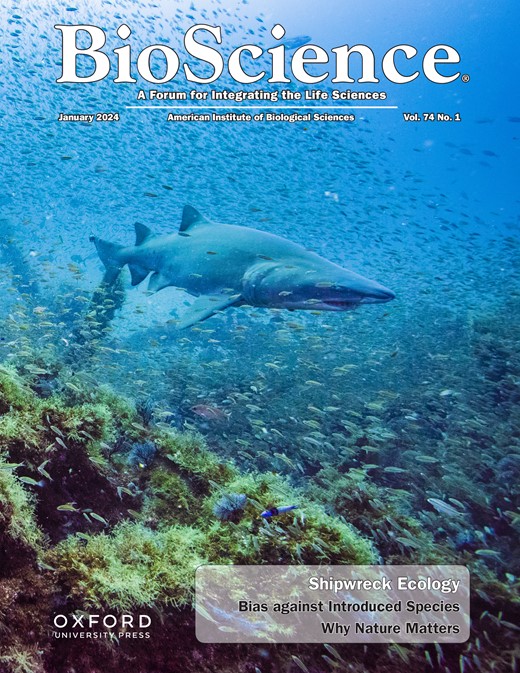The Potential of Hot Water Sapan Sungai Aro Thermophilic Bacteria Consortium in Producing Bioethanol
IF 7.6
1区 生物学
Q1 BIOLOGY
引用次数: 0
Abstract
. Biofuel is a potentially renewable alternative fuel in Indonesia. Bioethanol is one example of the most commonly used biofuel. Microorganisms of thermophilic bacteria are known to contribute to the production of bioethanol. Thermophilic bacteria are efficient against high temperature conditions so as to minimize contamination. Production of bioethanol can also use joint culture (consortium). Bioethanol production using a microbial biculture consortium is known to significantly increase the level of bioethanol production. The purpose of this study was to determine the compatibility and to determine the optimum potential of the thermophilic bacterial biculture consortium of Sapan Sungai Aro hot water for bioethanol production. This research is a type of descriptive research. To test the cooperation between consortium isolates of thermophilic bacteria producing bioethanol, a compatibility test was carried out using the disk diffusion method. Then the consortium isolates were fermented in liquid TMM (Thermophilic Minimum Media) medium, the bioethanol content was measured after distillation using a pycnometer. The results of the bacterial compatibility test showed that there was one pair of isolates that were not compatible, namely SSA 8 & SSA 14 due to the presence of a clear zone. On research results. The production of bioethanol by a consortium of thermophilic bacteria gives more optimal results compared to a single isolate. The best thermophilic bacterial biculture consortium from the Sapan Sungai Aro hot spring in producing biofuels is SSA 14 & SSA 16 which is 3.009%.热水 Sapan Sungai Aro 嗜热细菌联盟生产生物乙醇的潜力
.在印度尼西亚,生物燃料是一种潜在的可再生替代燃料。生物乙醇是最常用的生物燃料之一。众所周知,嗜热细菌微生物有助于生物乙醇的生产。嗜热细菌能有效抵御高温条件,从而最大限度地减少污染。生物乙醇的生产也可以使用联合培养(联合体)。众所周知,使用微生物双培养联合体生产生物乙醇可显著提高生物乙醇的生产水平。本研究的目的是确定 Sapan Sungai Aro 热水的嗜热细菌双培养联合体在生物乙醇生产中的兼容性和最佳潜力。本研究属于描述性研究。为了测试生产生物乙醇的嗜热细菌联合体分离物之间的合作情况,使用磁盘扩散法进行了相容性测试。然后在液体 TMM(嗜热最低限度培养基)培养基中发酵分离出的菌群,使用蒸馏器测量蒸馏后的生物乙醇含量。细菌相容性测试结果表明,有一对分离物不相容,即 SSA 8 和 SSA 14,原因是存在一个清晰的区域。关于研究成果。与单一分离菌相比,嗜热菌联合体生产生物乙醇的效果更为理想。在生产生物燃料方面,来自 Sapan Sungai Aro 温泉的最佳嗜热细菌双培养联合体是 SSA 14 和 SSA 16,其生物燃料生产率为 3.009%。
本文章由计算机程序翻译,如有差异,请以英文原文为准。
求助全文
约1分钟内获得全文
求助全文
来源期刊

BioScience
生物-生物学
CiteScore
14.10
自引率
2.00%
发文量
109
审稿时长
3 months
期刊介绍:
BioScience is a monthly journal that has been in publication since 1964. It provides readers with authoritative and current overviews of biological research. The journal is peer-reviewed and heavily cited, making it a reliable source for researchers, educators, and students. In addition to research articles, BioScience also covers topics such as biology education, public policy, history, and the fundamental principles of the biological sciences. This makes the content accessible to a wide range of readers. The journal includes professionally written feature articles that explore the latest advancements in biology. It also features discussions on professional issues, book reviews, news about the American Institute of Biological Sciences (AIBS), and columns on policy (Washington Watch) and education (Eye on Education).
 求助内容:
求助内容: 应助结果提醒方式:
应助结果提醒方式:


